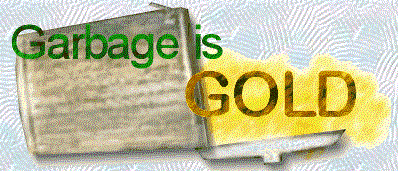
Going GREEN iSCHOOL
An Advocacy Promoting Environmental Health and Sanitation in School

Waste Segregation Program

Methods of disposing Solid Wastes
Waste management is defined as the collection, transport, processing or disposal, managing and monitoring of waste materials. Management of solid wastes materials is usually the responsibility of the local government.
Solid Waste Management
There are different methods of disposing solid wastes whether in a developed or developing nations, for urban and rural areas, and for residential and industries.
In the Philippines the most common method of disposal is Landfill. It involves burying of wastes often in abandoned or unused quarries, mining voids or borrow pits. However, the state of the landfills in the country is very poor. This can create a number of adverse environmental impacts such as wind-blown litter, proliferation of vermin and production of methane gas which kills surface vegetation and is also a greenhouse gas.
IMPLEMENTATION OF HIWA-HIWALAY NA BASURA SA BARANGAY PROGRAM
Legal basis for the implementation of the Program
Section 17 of the Local Government Code mandates LGUs to provide an efficient and effective solid waste collection and disposal system under a comprehensive environmental management program.
The Department of Environment and Natural Resources (DENR), thru the National Solid Waste Management Commission-Secretariat (NSWMCS) at the Environmental Management Bureau (EMB), entered into three agreements, with the Department of Education (DepEd), the Metro Manila Development Authority (MMDA), and seven local government units (LGUs), respectively, for three separate solid waste management programs last June 21, 2012.

Integrating Solid Waste Management in School Curriculum




